The unemployment numbers for June were slightly higher than expected as of last month’s forecast, because of an unexpected, but likely transitory, increase in workers’ job separation rate, and the contour of the forecast for July is broadly unchanged compared to last month. The anticipated decline in unemployment is however slightly weaker because of disappointing news on both the job openings and unemployment insurance claims front that the model carries forward.
This post discusses my monthly update of the Barnichon-Nekarda model. For an introduction to the basic concepts used in this post, read my introductory post (Full details are available here.)
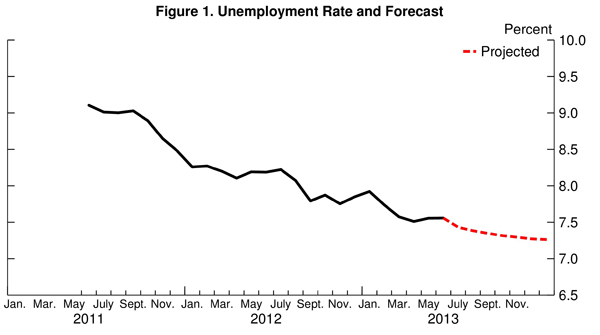
In April, the unemployment rate remained flat at 7.6%, while the model anticipated a 0.1 ppt drop (to 7.5%, see Table 1). This surprise was due to an unexpected increase in the job separation rate (figure 3) that the model sees as transitory. The contour of the forecast is broadly unchanged compared to last month, although the model now anticipates a slower labor market recovery: the jobless rate is now projected to reach 7.3% by December 2013, a somewhat higher level than the 7.1% expected as of last month’s forecast (Figure 1).
The intuition for this forecast is easily understood by looking at the projected behavior of the “steady-state” unemployment rate. The steady-state unemployment rate — the rate of unemployment implied by the underlying labor force flows (the blue line in figure 2)— stands currently at 7.1%. Our research shows that the actual unemployment rate converges toward this steady state. With a steady-state unemployment rate at a significantly lower level than the actual rate (7.1 versus 7.6, a 0.5 percentage point difference), this “steady-state convergence dynamic” is strongly pushing the unemployment rate down, implying a fast decline in unemployment in the future. However, going forward, the model anticipates the steady-state unemployment rate (SSUR) to stay around 7.1% over the next 6 months, in contrast to last month’s forecast that anticipated a slow decline in the SSUR (figure 2). The steady-state convergence dynamic will thus become weaker as the unemployment rate converges to 7.1 percent, implying a decelerating rate of decline until the end of the year.
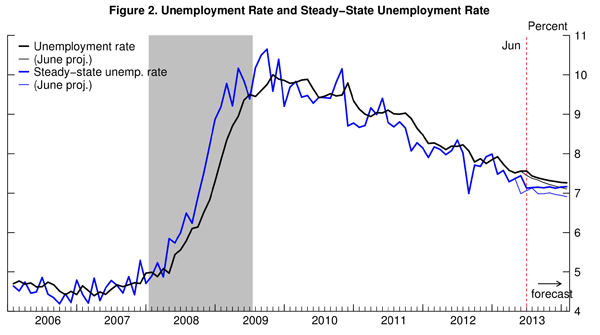
To forecast the behavior of steady-state unemployment (and hence of the actual unemployment rate), the model propagates forward its best estimate for how the flows between employment, unemployment and out-of-the labor force will evolve over time. With disappointing news on the job openings front (job openings increased only marginally in June) and on the unemployment insurance (UI) claims front (the number of new UI claims capturing new layoffs has been essentially flat since April, showing little signs of further decline), the model now anticipates a slower increase in the workers’ job finding rate over the next several months (UE, figure 4) and no decrease in workers’ job separation rate (EU, figure 3). As a result, the decline in the steady-state unemployment rate is thus slower than anticipated in the prior projection.
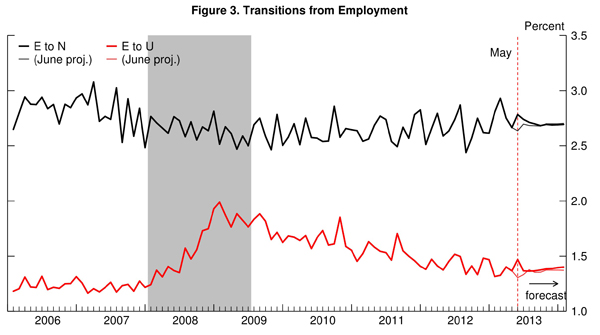
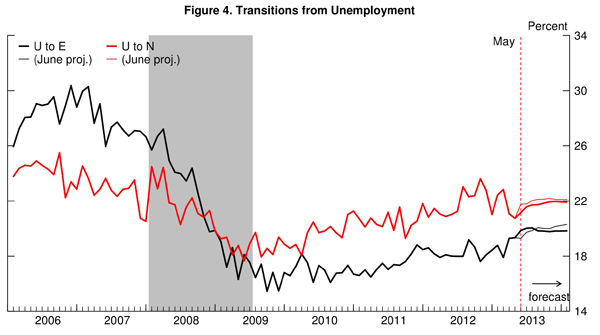

To read more about the underlying model and the evidence that it outperforms other unemployment rate forecasts, see Barnichon and Nekarda (2012).

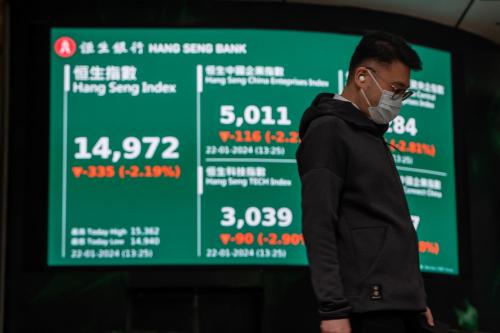

Commentary
Lower Unemployment Projected for July, but Future Recovery Will Still Be Slower
July 31, 2013